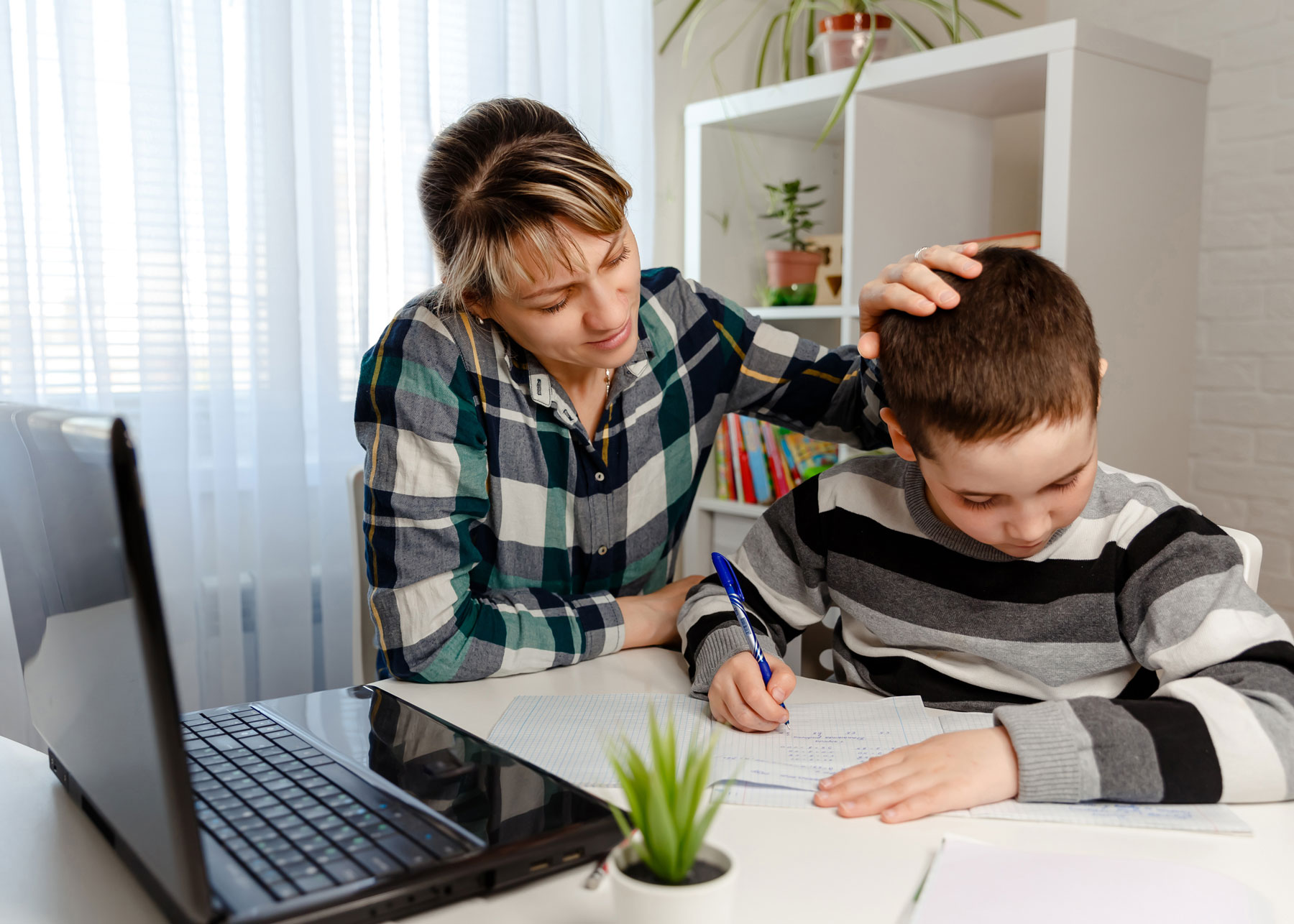Since schools have closed in response to the coronavirus pandemic, parents and teachers of elementary and middle school students have been working hard to foster a climate in which students can succeed in an online learning environment.
It hasn’t been easy for parents, students or teachers. But Cheryl C. Durwin, a parent and professor of psychology whose expertise is in educational psychology, has offered suggestions on how to make this transition easier and more effective for all. She is also a parent.
“Educational psychology, the science of linking psychology to educational practice, can provide us with some evidence-based tips for remote education,” Durwin said.
Tips for parents:
“We parents need to realize that we are not our children’s teachers, nor are we actually homeschooling our children,” she said. “Our focus should be on providing the right amount of structure and support for their learning.”
*Establish developmentally appropriate expectations. For example, younger children with shorter attention spans cannot sit and focus for long periods of time and may need more direct assistance and monitoring from parents. But students in upper elementary through middle school grades should be allowed greater independence in completing their work with assistance as needed. This will give them experience at monitoring and evaluating their own progress, an important self-regulatory skill of successful learners.
*Create a designated workspace and schedule for your child. A designated workspace simulates conditions that students experience at school. Sitting at a desk or table facilitates concentration and reduces distractions that occur when students sit in front of a TV or on their bed. Creating a flexible schedule for your child prevents procrastination and teaches them time management, another important self-regulatory skill. Older children can create their own schedules with assistance from parents as needed.
*Try to maintain typical family routines. Keeping routines creates a sense of normalcy in your home and eases children’s anxiety about these uncertain circumstances. It is important for your child to get enough sleep and keep a “school night” bedtime and waking schedule. Sleep is important for strengthening memory of learned information. Continuing to read with your children is also important, especially for those in grades K-3.
Tips for students:
“Students should remember that remote education requires the same types of effective learning strategies as face-to-face learning,” Durwin said. “These practices are even more important while learning remotely as the lines between home and school become blurred.”
*Put all electronic devices away. Contrary to popular belief, multitasking is an educational myth. We do not perform two tasks at once, such as completing a learning activity and checking Snapchat. Rather, we alternate our attention between the two tasks, which causes us to take longer and make more errors, especially on the learning task! For optimal attention and performance, put electronic devices out of sight, not just face down or on silent mode.
*Take frequent breaks and spread out learning activities. Working in small chunks of time with breaks for physical activity enhances a learner’s attention and working memory and results in improved academic performance. Also, learning and studying information over multiple days is more effective than cramming material into one long session. For example, if an assignment is due at the end of the week, it is better to complete a little each day, reviewing your work from the previous day and adding to it, rather than completing it all in one sitting the day before the deadline.
*Reward yourself for a job well done. Teachers use small rewards for effort, mastery, and achieving goals to promote students’ intrinsic motivation and encourage them to keep working hard. Likewise, you can reward yourself after diligently completing a learning activity by choosing a preferred activity, such as checking social media, listening to music or having a snack.
Tips for teachers:
“Teachers should be reassured that there is no single correct approach to effectively delivering remote instruction,” Durwin said. “This issue involves various factors, such as the school district’s resources, technology platforms, student population, subject area, and grade level, much of which is out of the teacher’s control. My tips for teachers focus on methods that are within their control.”
*Create a sense of belonging. For many students, the transition to remote learning was sudden with no chance to say goodbye to friends and teachers. Therefore, it is important for you to create a virtual learning environment where students feel connected. You should be accessible daily (while preserving your own personal time). Also, although no one expects you to perfectly replicate your classroom approaches, remember that remote instruction is not just assigning content for students to tackle on their own. Think of ways you can interact with your students, as well as seek opportunities for peer-to-peer interaction.
*Keep workload manageable. Realize that you cannot accomplish all the learning objectives and activities that you would have in your actual classroom. Also, the time allotted for a learning activity in class may take students much longer to complete on their own. It is a good idea to break activities into smaller, manageable tasks with separate deadlines. This helps students set short-term, achievable goals, which is important for encouraging a sense of mastery.
*Focus on meaningful learning. This means encouraging a deep understanding of content in which newly learned information is related to prior knowledge and real-life experiences. Meaningful remote learning can be accomplished in many ways and will depend on the subject and grade level. For reading and math, provide students with spaced practice of skills and problem solving. For subjects such as science, social studies, and language arts, you can create learning activities that encourage open-ended explanations, experimentation, problem-solving, writing and real-life application.
(These suggestions are based on content from EdPsych Modules, published by Sage Publications and co-authored by Cheryl C. Durwin, professor of psychology at SCSU, and Marla Reese-Weber, associate dean in the College of Arts and Sciences at Illinois State University.)


